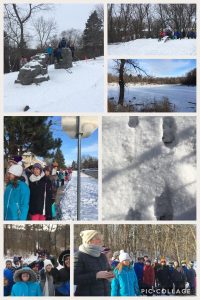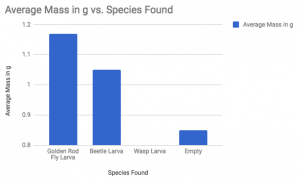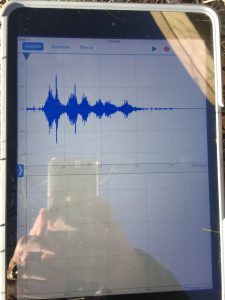It’s the journey, not the destination
Last week I was able to get outside, even with the new snow that came. Kindergarten students had been exploring the concept of rolling and the properties of the objects that are ‘good’ rollers. After discovering that the crayon and vial (both cylinders) didn’t roll well, we decided to see if they would roll well on the hills around our school. We tried the sidewalk that is sloped, an asphalt path, and hills of different sizes that were covered in snow and ice. Finally, we made it to the playground and tried these objects on the slides as well. We had discussed before heading out to watch for rolling versus sliding. We discovered some hills made things roll better, but in an unexpected direction – the slope was a different direction than anticipated. We also discovered that bumpy hills don’t make good hills for rolling. Finally, the slides taught us that it’s possible to have too big of a hill and that’s when things start to slide instead of roll but sometimes it does both on the same slide.
This was the first time trying this lesson and I was a bit nervous about how things would go. This age group is a bit of a wild card to begin with, add to that the fact that we are on the playground to do our testing and observing created a potential for a free for all. I was pleased to observe kids actually doing what they were supposed to. Sure, there were a few who ditched their partner and spent time going down the slides themselves, but in the end most students had observations to share. One of the other things I noticed was the enthusiasm of their observations. Again, this might have to do with the grade level but many students had high energy, vocal and theatrical descriptions of the motion of the crayon and vial. This served as another good reminder for me to trust myself and trust outside learning. Even if nothing had worked, kids were still outside, playing close attention, sharing observations and working together.
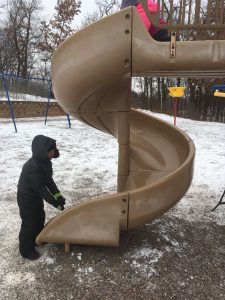
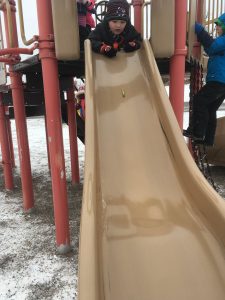
Last week, I also took two fifth grade classes on the extended walk to the local park we had visited this fall. Part of the intent of this visit was for the class to see an example of a nature playground to help inspire ideas for the design project they have been working on. Along the way, our goal was to also observe seasonal changes to the forest – what has stayed the same and changed since our last visit in September. Finally, the next science unit is Earth Processes and we were searching for evidence of erosion. The temperature was hovering right around zero before we left (the magic number for canceling outdoor activities according to school policy) but since it was 3 and the forecast to only get warmer we got the green light. It was simply a glorious morning. The sun was out for our first half. The sidewalk was actually our most treacherous walk with ice left over from shoveling and melting. But once we got into the woods it felt a bit like a Robert Frost Poem, only during the day, and for a brief few moments, everyone stopped to listen
“The only other sound’s the sweep
Of easy wind and downy flake. “
On we walked, checking for tracks, listening to the wind, watching for birds, surprised by the whiteness, noticing things we didn’t notice when the world was green. Yes, we made the observations I had planned, but I was reminded again that sometimes its not about the destination but the journey.
